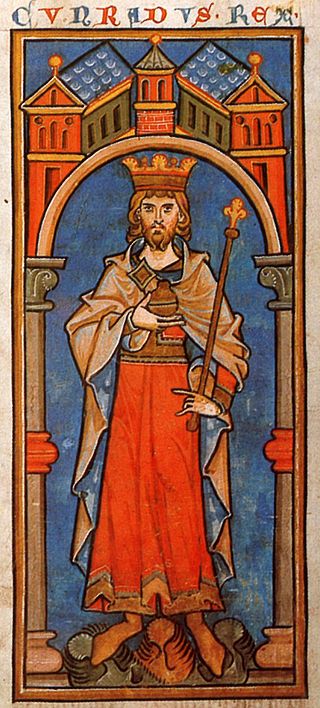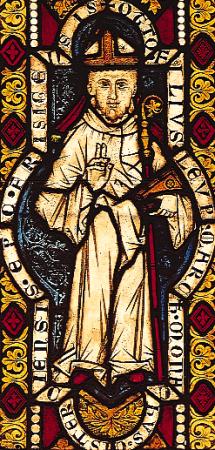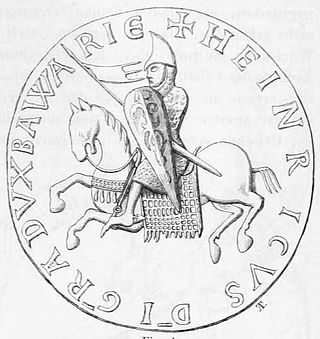Frederick Barbarossa was elected King of Germany on 4 March 1152 in Frankfurt am Main. Frederick's uncle, Otto of Freising, was an eyewitness and is the most important source for the 1152 election. According to him, "the entire company of the princes ... from the immense extent of the transalpine realm (as well as certain barons from Italy)" met in Frankfurt by early March to elect a successor to King Conrad III, who had died barely two weeks earlier at Bamberg on 15 February 1152. Only five days after his election, on 9 March, Frederick was crowned in the Aachen Chapel.
The apparent quickness of the election of 1152 contrasts with those of 1125 and 1138. In his own letter to Otto of Freising listing the accomplishments of his first five years on the throne, Frederick does not mention his election, but says only that "we were anointed at Aachen and received the crown of the German realm." According to Otto, Conrad had on his deathbed designated Frederick as his choice of successor, because he knew that the princes would not elect his young son, Frederick. He then entrusted his son and the royal insignia to Frederick.
Conrad's designation was not sufficient to make Frederick king or determine his election. This is shown from a diploma—D.38 in Heinrich Appelt's edition of Frederick diplomas—drawn up for Alteburg Abbey during the brief interregnum. A blank space was left for the king's name and Frederick himself was a witness to the document as Duke of Swabia. As king, he confirmed the document in December and his name was then added by a notary to the blank space. Since no document was issued during Frederick's brief time in Frankfurt, the names of those participating in his election are not directly attested and can only be inferred. The witness list of D.38 offers some evidence of those present for the negotiations or debate on Conrad's succession. Frederick's cousin Henry the Lion was among them. According to Otto, the princes choice of Frederick was unanimous. They preferred him for his proven valour and his descent from "two renowned families", the Staufer on his father's side and the Welfs on his mother's. It was thought that Frederick could bring a measure of stability of "universal advantage" to the kingdom.
Frederick sent a letter—Appelt's D.5—to inform Pope Eugene III of his election. It was carried by Bishop Eberhard II of Bamberg, who has been accused of altering the text of the only copy that survives in Wibald of Stavelot's letter book.

The Hohenstaufen dynasty, also known as the Staufer, was a noble family of unclear origin that rose to rule the Duchy of Swabia from 1079, and to royal rule in the Holy Roman Empire during the Middle Ages from 1138 until 1254. The dynasty's most prominent rulers – Frederick I (1155), Henry VI (1191) and Frederick II (1220) – ascended the imperial throne and also reigned over Italy and Burgundy. The non-contemporary name of 'Hohenstaufen' is derived from the family's Hohenstaufen Castle on the Hohenstaufen mountain at the northern fringes of the Swabian Jura, near the town of Göppingen. Under Hohenstaufen rule, the Holy Roman Empire reached its greatest territorial extent from 1155 to 1268.

Frederick Barbarossa, also known as Frederick I, was the Holy Roman Emperor from 1155 until his death 35 years later. He was elected King of Germany in Frankfurt on 4 March 1152 and crowned in Aachen on 9 March 1152. He was crowned King of Italy on 24 April 1155 in Pavia and emperor by Pope Adrian IV on 18 June 1155 in Rome. Two years later, the term sacrum ("holy") first appeared in a document in connection with his empire. He was later formally crowned King of Burgundy, at Arles on 30 June 1178. He was named Barbarossa by the northern Italian cities which he attempted to rule: Barbarossa means "red beard" in Italian; in German, he was known as Kaiser Rotbart, which means "Emperor Redbeard" in English. The prevalence of the Italian nickname, even in later German usage, reflects the centrality of the Italian campaigns to his career.

Conrad III of the Hohenstaufen dynasty was from 1116 to 1120 Duke of Franconia, from 1127 to 1135 anti-king of his predecessor Lothair III and from 1138 until his death in 1152 king in the Holy Roman Empire. He was the son of Duke Frederick I of Swabia and Agnes, a daughter of the Salian Emperor Henry IV.
Philip of Swabia was a member of the House of Hohenstaufen and King of Germany from 1198 until his assassination.

Conrad, a member of the Hohenstaufen dynasty, was the only son of Emperor Frederick II from his second marriage with Queen Isabella II of Jerusalem. He inherited the title of King of Jerusalem upon the death of his mother in childbed. Appointed Duke of Swabia in 1235, his father had him elected King of Germany and crowned King of Italy in 1237. After the emperor was deposed and died in 1250, he ruled as King of Sicily until his death.

Otto of Freising was a German churchman of the Cistercian order and chronicled at least two texts which carries valuable information on the political history of his own time. He was Otto I Bishop of Freising as from 1138. Otto participated in the Second Crusade; he lived through the journey and reached Jerusalem, and later returned to Bavaria in the late 1140s, living for another decade back in Europe.
Frederick II, called the One-Eyed, was Duke of Swabia from 1105 until his death, the second from the Hohenstaufen dynasty. His younger brother Conrad was elected King of the Romans in 1138.
Frederick V of Hohenstaufen was duke of Swabia from 1167 to his death. He was the eldest son of Frederick I Barbarossa and Beatrice I, Countess of Burgundy.

Henry II, called Jasomirgott, a member of the House of Babenberg, was Count Palatine of the Rhine from 1140 to 1141, Duke of Bavaria and Margrave of Austria from 1141 to 1156, and the first Duke of Austria from 1156 until his death.
Bertha of Sulzbach was a Byzantine Empress by marriage to Byzantine Emperor Manuel I Komnenos.

The Kingdom of Germany or German Kingdom was the mostly Germanic-speaking East Frankish kingdom, which was formed by the Treaty of Verdun in 843, especially after the kingship passed from Frankish kings to the Saxon Ottonian dynasty in 919. The king was elected, initially by the rulers of the stem duchies, who generally chose one of their own. After 962, when Otto I was crowned emperor, East Francia formed the bulk of the Holy Roman Empire, which also included the Kingdom of Italy and, after 1032, the Kingdom of Burgundy.

Vladislaus II or Vladislav II was the Duke of Bohemia from 1140 and then King of Bohemia from 1158 until his abdication in 1173. He was the second Bohemian king after Vratislaus II, but in neither case was the royal title hereditary.

Gertrude of Süpplingenburg was, by her two successive marriages, Duchess of Bavaria from 1127 to 1138, Margravine of Tuscany from 1136 to 1139, and Duchess of Saxony from 1137 to 1138, Margravine of Austria and again Duchess of Bavaria until her death. She was regent of Saxony during the minority of her son in 1139–1142.

The Duchy of Franconia was one of the five stem duchies of East Francia and the medieval Kingdom of Germany emerging in the early 10th century. The word Franconia, first used in a Latin charter of 1053, was applied like the words Francia, France, and Franken, to a portion of the land occupied by the Franks.

Gertrude of Sulzbach was German queen from 1138 until her death as the second wife of the Hohenstaufen king Conrad III.
Imperial cathedral is the designation for a cathedral linked to the Imperial rule of the Holy Roman Empire.
Conrad I was the Duke of Merania from 1152 until his death. Thitherto he had been the advocate of St Andreas at Freising since 1150 and Count of Dachau from 1152.
Henry, in German Heinrich, was the archbishop of Mainz from September 1142 until his deposition in June 1153.

The Tafelgüterverzeichnis is a list of the "courts which belong to the table of the king of the Romans", that is, a register of the lands belonging to the royal demesne and of the payments in cash or in kind which each estate owed annually. The title "king of the Romans" was the preferred official title of the medieval Kings of Germany if they had not yet been crowned Holy Roman Emperor. Besides Germany, they also ruled the kingdoms of Italy and Burgundy. The Tafelgüterverzeichnis lists lands in both Germany and Italy.

The Duchy of Merania was a fiefdom of the Holy Roman Empire from 1152 until 1248. The dukes of Merania were recognised as princes of the Empire enjoying imperial immediacy at a time when these concepts were just coming into use to distinguish the highest ranks of imperial nobility.












